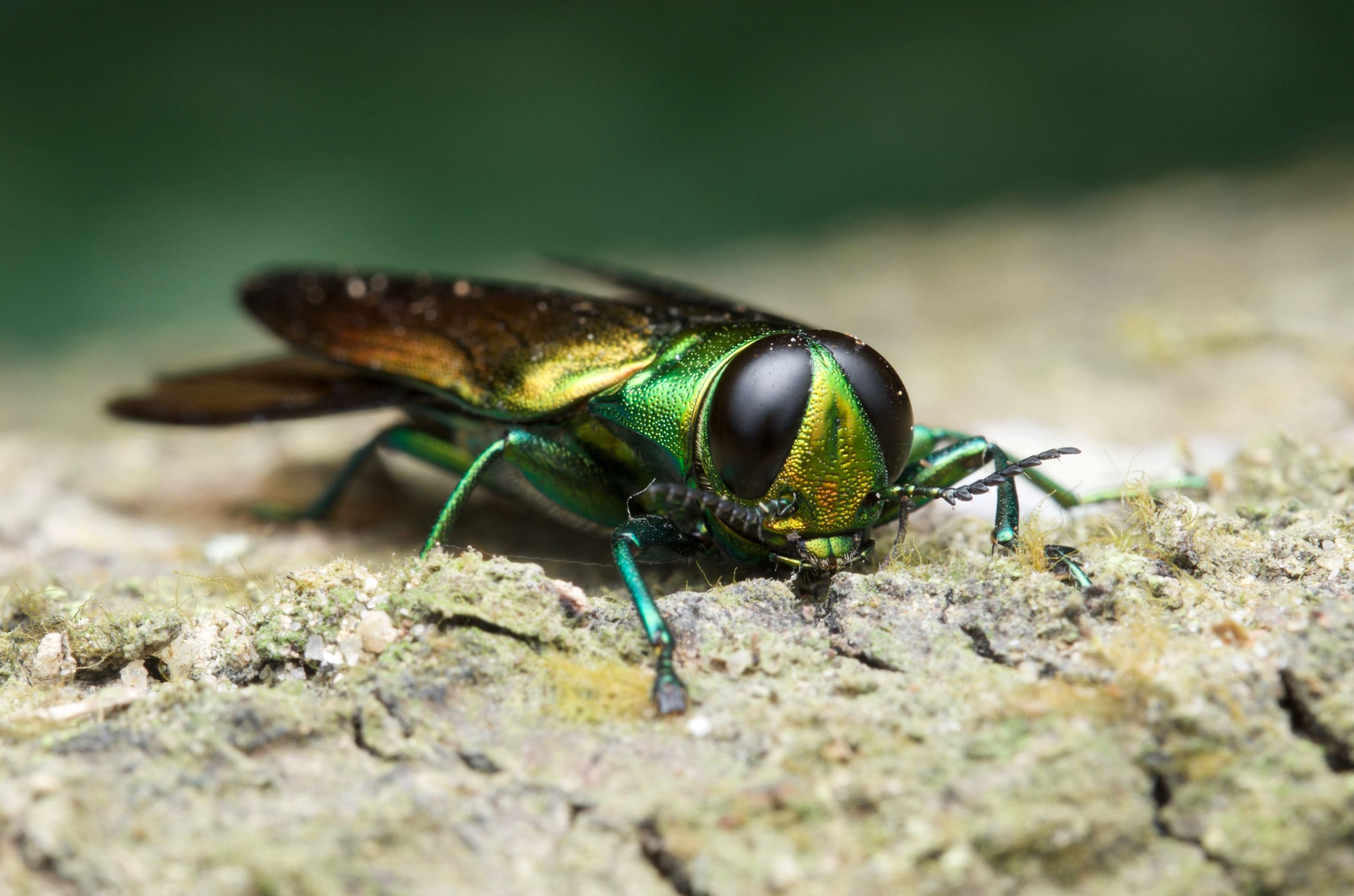
What is the first thing that comes to mind when you hear about forest devastation? Wildfires, right? It’s true that wildfires raging through forests in the West and South of the country make headlines from June through August every year. They cost states billions of dollars in damage control. But there’s another determined and relentless killer that silently destroys vegetation and doesn’t get as much attention: pests.
Non-Native Pest Infestations
Armies of them, in fact, colonize and decimate our forests. They leave behind carcasses of dead trees that have to be cleared. Great cost and effort are then required to preserve timber, manage risks of spreading wildfires, and prevent additional global-warming gases being expelled into the atmosphere from dying plants. A study has found that the 15 most virulent pests in United States destroy enough trees to expel 6 million tons of carbon – equivalent to adding 4.6 million cars onto our roads every year.
According to estimates, there are 6 billion dead trees standing in western states alone, and about 40% of our forest regions are currently at risk of infestation from at least 450 oversea pests that have entered the country via international cargo ships and airplanes.
Non-native insects of foreign origin have an edge over local ones. They don’t have natural predators or other evolutionary checks-and-balances – advantages that allow their population to survive, thrive, and explode.
Here are some examples:
- Emerald Ash Borer: An iridescent, green beetle from North East Asia that feeds on ash species.
- Hemlock Woolly Adelgid: An insect from East Asia that feeds on sap from spruce and hemlock trees.
- Gypsy Moth: An insect of Eurasian origin that is partial to oak, feeds on whatever species is at hand.
- Asian Long-Horned Beetle: Also known as the Sky Beetle from Korea and China. It feeds on maple, poplar, willow, and also elm trees.
With over 400 more foreign intruder pests to go, this list could go on and on…
The Emerald Ash Borer
The U.S. discovered the Emerald Ash Borer (EAB) in southeastern Michigan, in the summer of 2002. Having, in all probability, crossed the Pacific Ocean in wooden packing material, the pest has since then been detected in 35 states. As of 2020, the EAB has been reported as active in six states (Minnesota, Massachusetts, Missouri, Iowa, Kansas and Tennessee).
All 16 species of ash trees in United States are at risk of an EAB infestation. To date, they have killed millions of ash in North America. The USDA has enforced quarantines and taken other steps to ensure that infected trees, logs, and firewood were not moved out of their zone of origin to contain their spread. This cost forestry departments, municipalities, nursery businesses, and property owners millions of dollars in pest management efforts.
The Spotted Lanternfly
While our country attempts to fight and control the EAB infestation, another battle has begun with the spotted lanternfly. Native to China and Vietnam, they arrived on American shores as egg masses on a stone shipment in 2012. Arborists found the first infestation of this pest in Berks County, Pennsylvania in 2014. The voracious insects wreaked havoc on trees, causing sap to ooze, leaves to curl, and trees to dieback. They also excreted a sugary substance that encouraged the growth of black, sooty mold.
Despite quarantine efforts, we have now discovered spotted lanternflies in New York, Delaware, and Virginia. Grapevines, apple trees, and stone fruit trees have the greatest draw for these insects. However, their track record of using at least 40 species of native plants as hosts in the United States (including hardwood trees of commercial value like maple and black walnut) opens up the possibility of them colonizing large swathes of the country in the near future. More in depth information on arborists’ struggles against the spotted lanternfly can be found in the April issue of TCIA magazine.
Costs and Pest Control Solutions
Imported pests have always been an expensive problem. Besides trees, the emerald ash borer, for example, consumed $850 million of taxpayer’s money during enforcement of control measures – a figure that could climb to $ 12.7 billion by 2020, says The Harvard Gazette.
Financial considerations aside, there are grim environmental impacts too. Every species of tree has a role to play within a forest’s complex ecosystem. These systems involve birds, mammals, insects, other plant species, and even soil. A shift in the balance shakes up a forest’s infrastructure which can cumulatively impact the country as a whole.
Recommendations like switching to non-solid-wood packaging material for imported goods, restricting import of live trees, and improving inspection protocols should be firmly enforced. Otherwise at least 25 more forest pest species will propagate on American soil each decade. And by 2050, three times as many invasive wood-boring insects will be occupying our forests.



